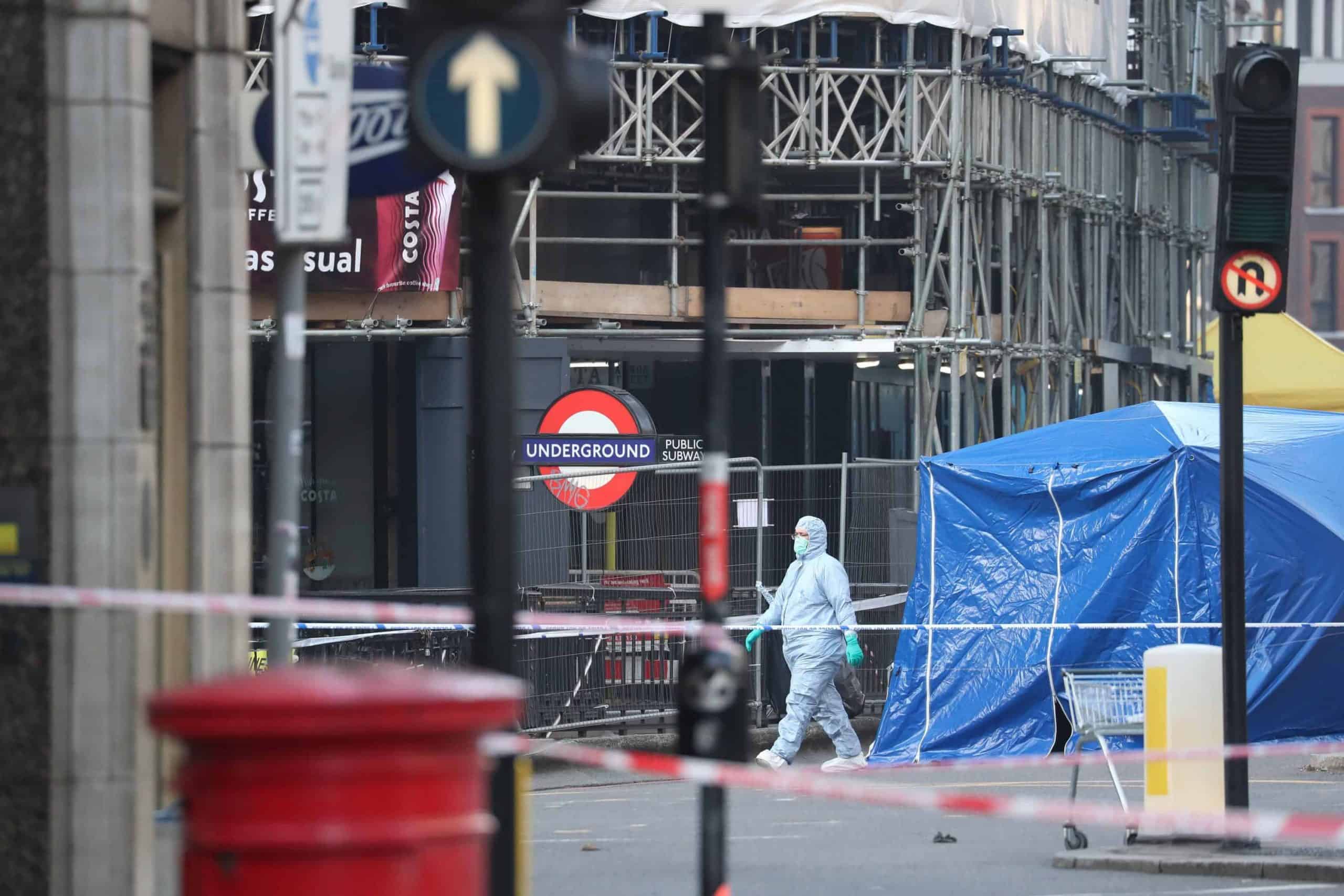
Credit;PA
The London Bridge attacker was a convicted terrorist released half-way through a 16-year prison sentence for a plot to bomb the London Stock Exchange.
Usman Khan killed a man and a woman in the knife rampage on Friday afternoon and injured three other people, who are being treated in hospital.
The 28-year-old, who was on licence and wearing an electronic monitoring tag, was attending a conference on prisoner rehabilitation organised by University of Cambridge-associated Learning Together at Fishmongers’ Hall and reportedly “threatened to blow up” the building.
Armed with two knives and wearing a fake suicide vest, Khan was tackled by members of the public before he was shot dead by police on London Bridge next to the Hall.
Video footage posted online shows Khan being taken to the ground as one man sprays him with a fire extinguisher and another, reportedly a Polish chef, lunges towards him with a narwhal tusk believed to have been taken from the wall inside the Hall.
The Queen and Duke of Edinburgh sent a message of sympathy to those killed and affected by the “terrible violence” and praised the “brave individuals who put their own lives at risk to selflessly help and protect others”.
Metropolitan Police Assistant Commissioner Neil Basu said he had been living in the Staffordshire area and that police were “not actively seeking anyone else” over the attack.
Police have been searching a three-storey block of flats in Wolverhampton Road, in Stafford, where Khan is believed to have lived.
Retired police officer Justin Lightfoot, who lives in a nearby street, said he instantly recognised Khan when a friend showed him a mugshot of the 28-year-old in a media report.
In February 2012, Khan, who had been based in Stoke-on-Trent, was handed an open-ended indeterminate sentence for public protection over his part in an al Qaida-inspired terror group that plotted to bomb the London Stock Exchange and build a terrorist training camp on land in Pakistan-controlled Kashmir owned by his family.
A list of other potential targets included the names and addresses of the Dean of St Paul’s Cathedral in London, then London mayor Boris Johnson, two rabbis, and the American Embassy in London.
But the sentence for Khan, along with two co-conspirators, was quashed at the Court of Appeal in April 2013 and he was given a determinate 16-year jail term and freed on licence in December last year and made to wear the tag.
The Parole Board said it had no involvement in his release and that Khan “appears to have been released automatically on licence (as required by law), without ever being referred to the board”.
Speaking before chairing a meeting of the Government’s emergency committee Cobra on Friday night, Prime Minister Boris Johnson said he had “long argued” that it is a “mistake to allow serious and violent criminals to come out of prison early and it is very important that we get out of that habit and that we enforce the appropriate sentences for dangerous criminals, especially for terrorists, that I think the public will want to see”.
It has also emerged that one of the people who helped tackle Khan was James Ford, who was jailed in 2004 for the motiveless murder of a 21-year-old woman in Kent.
Ford, who was jailed for life with a minimum term of 15 years, had been invited to the Fishmongers’ Hall on day release along with Khan, students, staff members, alumni and representatives from the Ministry of Justice.
The attack came weeks after the UK’s terrorism threat level was downgraded to “substantial” from “severe”, meaning attacks were thought to be “likely” rather than “highly likely”.
Home Secretary Priti Patel made the announcement on November 4 – days after Parliament voted to hold an early election.
London Bridge was the scene of a terror attack in 2017 – also during a general election campaign – when eight victims were killed along with the three terrorists, who were also wearing fake suicide vests and armed with knives.